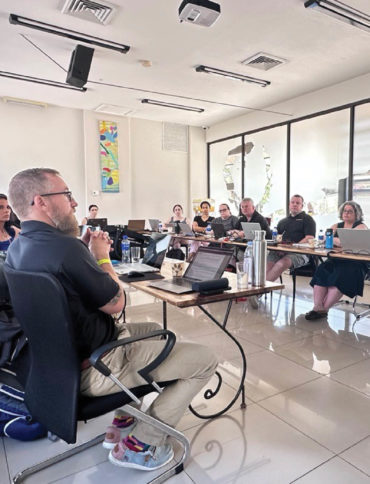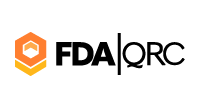
Monitoring
This task is completed by a clinical research association (CRA) who is delegated by the sponsor. The CRA’s role is to review the necessary clinical reporting documentation and ensure compliance with the study protocol and the sponsor’s standard operating procedures (SOPs). In addition, the CRA ensures ethical and regulatory components related to the trial are being followed. The CRA reviews and queries documentation created at the site during the conduct of the trial to ensure data integrity and compliance with the protocol are maintained.
Auditing
This role is hired by the sponsor to serve as an independent non-bias review of a clinical trial at a specific point in the trial. Sometimes an audit occurs in the middle of a study, maybe at a database lock or right at the end of enrollment. Other times an audit may be conducted when a site is a high enroller or has had numerous problems with resolving compliance issues. The sponsor, or their delegated clinical research organization (CRO), may have expressed a concern about compliance actions from the CRA or their data management group, so an auditor is sent in to evaluate the site, vendor, or business partner for conformity with the project. There may be a concern by the sponsor that the partner could be audited by a regulatory agency (such as the Food and Drug Administration (FDA) or European Medicines Agency (EMEA)) as a for-cause audit or a routine investigation prior to investigational product approval.
Similarities
Both roles look to ensure compliance with the clinical trial protocol, the overarching guidelines governing the execution of the trial in their state and country, as well as the ethics documents approved by the Institutional Review Board (IRB) to ensure the safety and welfare of the human volunteer is maintained.
Both roles review the support documentation developed at the site. In a clinical trial, these documents include regulatory documents, also known as essential documents, approved IRB documents, source documents where data is derived from, and reporting of adverse events that could lead to harm of enrolled subjects.
In addition, both roles review data entry into the study database and work with the Principal Investigator (PI) and site staff to identify corrective actions and to become compliant with rules governing clinical research.
Both roles’ main goal is to protect the rights, safety, and well-being of study participants as well as data integrity.
Differences
A monitor follows a Clinical Monitoring Plan that is established by the sponsor. They are required to review assigned sites within certain timelines and complete a required number of items. This is defined more as a quality control process.
An auditor follows an Audit Plan that is also established with the sponsor, however while the auditor reviews categories of work, they do not always have defined rules to follow while conducting the audit. The auditor lets the documentation and data reveal itself. Problems are identified through the review of process and compliance with regulatory guidelines. Auditing is defined more as a quality assurance function undertaken by independent professionals.
Monitoring is an ongoing activity throughout the conduct of a trial, while auditing is an assessment of compliance with defined standards at a given moment in the clinical trial. A big difference is the respect to responsibilities of the different stakeholders and how often the review processes are carried out. In the pharmaceutical industry monitoring lies with the sponsor. In the academic study space, monitoring lies with the PI, because in Investigator Initiated Studies, the PI is the sponsor because they hold the protocol and grant responsibilities.
Monitoring:
- Monitors adhere to a Clinical Monitoring Plan set by the sponsor.
- They review sites within specified timelines and complete required items.
- Defined as a quality control process with adherence to rules and guidelines.
Auditing:
- Auditors follow an Audit Plan from the sponsor.
- They review work categories without fixed rules, relying on documentation.
- Identified issues come from process review and compliance assessment.
Conclusion
How can one address challenges faced during an auditor or monitoring visit?
- Communicate! Open effective discussions help all parties involved. It is vital that discussions about problem areas or concerns are raised so they can be addressed and corrected.
- Ensure your policies and standard operating procedures are current and follow the processes your staff are expected to exercise during the conduct of the clinical trial. Also, be sure to document training of all staff when it occurs.
- Engage the PI and ensure the study team is prepared before each monitor visit and audit. It is time for the delegated staff to evaluate the good work they do and identify a way to improve on growth areas. A good internal check and balance system goes a long way to prevent problems and verify each other’s work.
- Research is a team sport! It takes a lot of people and actions to run an effective clinical trial. Work with your team, both internally and externally, to do what is right for the human subject, the regulations and the best possible outcomes for the clinical trial.
Monitoring is hired by the sponsor of the clinical trial. Monitors (also called clinical research associates, CRAs) are routinely hired through a contract research organization (CRO), who the sponsor has contracted to carry out work on their behalf. The monitor works with the clinical research site and reviews their work conduct to make sure it is following the scientific protocol. This can include reviewing subject participation documents, data entered in the clinical database, equipment and lab specimens.
Auditors are also hired by the sponsor. However, they are independently contracted to review the entire process. They represent the unbiased eye of the clinical study in that they review the site work, the monitoring work and report this back to the sponsor for any necessary corrections to be carried out. The auditor ensures that data is collected and documented correctly, subjects enrolled in the clinical study are done so voluntarily and through proper consenting and work processes are executed accurately following policies, regulations and the study protocol.
FDAQRC has a network of global consultants who are experienced auditors across all GxP areas. With thorough knowledge of FDA regulations for any stage of the clinical research process, our auditors can ensure your project is running efficiently and up to industry standards.
Amy Fox is a full time Auditor for FDAQRC with over 20 years of experience in clinical trial operations and regulatory compliance. She holds her Certified Clinical Research Coordinator (CCRP) with ACRP. Her areas of expertise include GCP and early phase human pharmaceutical clinical research.


How to Secure Project Assignments with FDAQRC: A Guide for Consultants

Tips For Preparing & Hosting a Successful Audit

Regulating AI in Clinical Trials: What ICH E6(R3) Does (and Doesn’t) Say

Explores the Differences Between Auditors and Inspectors in the Clinical Research Industry

Competency Based Programs Contribute to Early Clinical Research Professional’s Training

15 Years of Excellence: FDAQRC's Journey and Future Vision

Tips for a Positive Outcome While Performing a Challenging Audit


